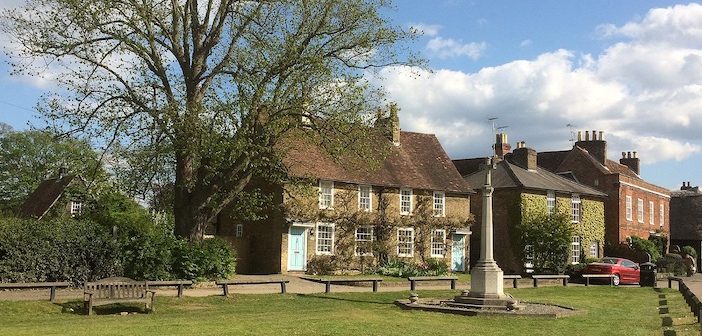Thirty years ago, I was asked to find if there were any intellectuals in Essex. At the time, working freelance for regional newspaper the Essex Chronicle, I noted the Evening Standard had published a feature on Essex being the home of the second-hand car dealer and Page Three girl, and little else. The assignment wasn’t tongue-in-cheek; I wanted to redress the implied trashing of my home county which, if you knew, had rather more to it than what the Standard suggested.
Thirty years on, I was approached by Visit Essex to revisit the county which is, or was, my home and although I have made interim journeys to visit family, friends and a favourite boutique shop (which dressed me better than I dressed myself), I have, admittedly, always felt west is best – I now live in Richmond-upon-Thames, completely the other side of London. But, with this piece, I wanted to return with a different agenda, see what had changed, or not, and rediscover what Essex really has to offer.
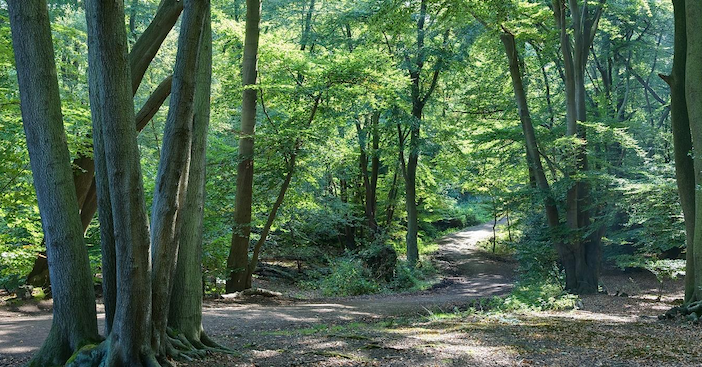
Epping Forest (photo Visit Epping Forest)
So it was with a degree of mixed emotion I made the return journey, flipping a coin to see which way, the Watford M25 or Dartford M25, would provide the least painful route. This time, I chose upper and headed to Epping Forest, the back garden of some of the wealthiest towns in the south (Loughton, Chigwell et al) and spanning some 8000 acres of ancient woodland and former royal hunting forest. Its oldest Beech is allegedly 1000 years old, Dick Turpin allegedly robbed people here, and Rod Stewart, Phil Tufnell, Lisa Snowdon and Alan Davies allegedly live in the vicinity.
The roads in Essex are either Roman straight or wind like a liquorice string, with cambers, just to add challenge to the boy racers. The views are still the fields I remember as a child and teenager, although Chelmsford, designated city status a decade ago has spread like honeycomb, and what were once neighbouring villages, such as Writtle, with lovely churches and pretty greens, has now been subsumed into the urban conurbation.
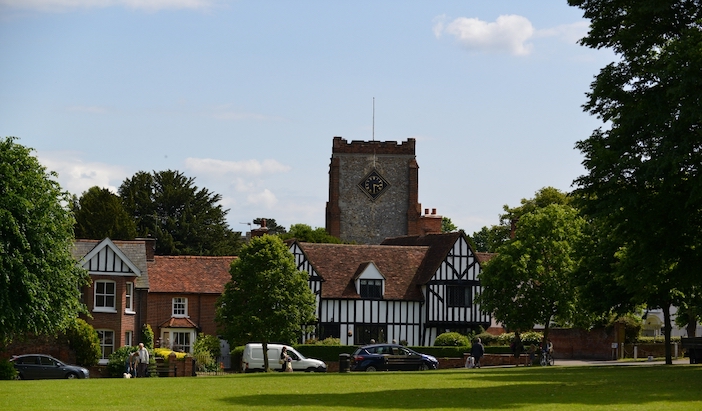
The village green, Writtle
The city has historical, and royal, pedigree. Chelmsford was a former capital of England for a few days when the seat of government temporarily moved here, 600 years ago, and it was from Writtle that Richard II issued orders to suppress the Peasants’ Revolt in 1381. The birthplace of radio, in 2019, The Times rated the city as one of the best places to live in the UK, praising it for its appeal to foodies, culture vultures, dedicated shoppers and good schools.
Returning, I noticed the pace of life here hasn’t got faster – as in most places that expand this quickly, it’s even got slower. Traffic in rush hour is worthy of anything you will find in central London. While the city centre hosts familiar brands, bar some closures post-Covid (a once huge Debenhams leaves a noticeable gap), it still has the excellent Baddow Road, with its independent clothes stores; at Number Six, some of the people who served me thirty years ago are still working there.
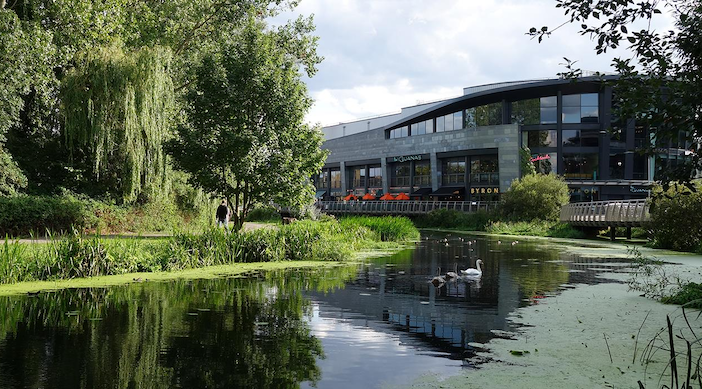
Bond Street, Chelmsford
The place to shop, however, is Bond Street, and has a touch of its namesake in central London; there are nods to local traders with outlets selling local beers, and a Tiptree tearoom which, as is customary now, has expanded into craft vodkas, gins, even candles, as well as its renowned jams. The tearoom has a brief history of the jam company spread over the walls. I bought a tree decoration from a shop called The Pop-Up Club from a guy called Noah who looked as though he should be in a band. “I am in a band,” he replied, “most shop assistants in Essex are.”
Underestimating the satnav for those seriously winding liquorice string roads, I venture out to my stay, the recently renovated Downham Hall. This hotel is situated next to St Margaret’s Church, where the bellringer practice provides an audible backdrop and the views are pure Essex countryside; fields lying flat to the horizon, the early morning mist giving it the look of a scene of from Pride and Prejudice. The owners have worked hard to cultivate a stylish standard of service for Londoners seeking a touch of Le Manoir in Essex.
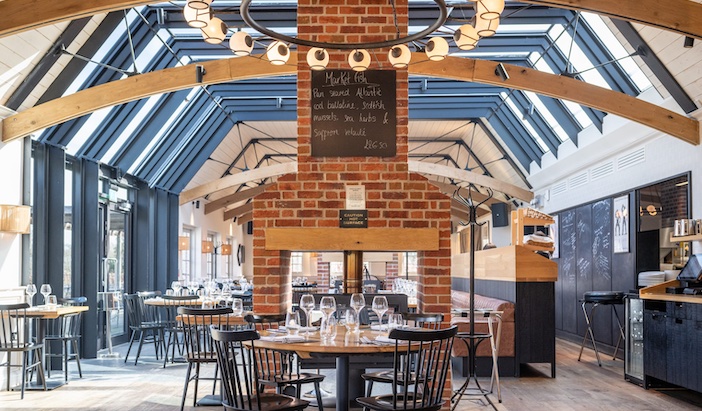
The Green Man, Great Waltham
Back on those roads, even trickier to navigate in the dark, and encountering fleets of personal number-plated four-wheel drives en route, I was making for The Green Man, a morphed bistro-restaurant-pub, about half an hour’s drive from Chelmsford, close to Great Waltham. It’s testament to Essex’s growing culinary pedigree that this is owned by the Galvin brothers. Deserving of its many awards, the food is excellent – I would recommend the sea bream in a heartbeat – and nothing like the Essex fodder I remember.
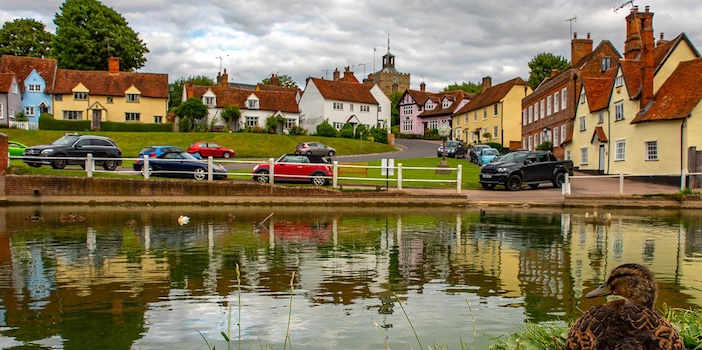
The green and duck pond, Finchingfield
The next day my itinerary led me to Finchingfield, where I duly took photographs of the most photographed village in the UK and stopped at the local tea shop where the owner has a memory wall. Name all the stars and you get free tea and cake (I didn’t). Then on to Great Dunmow, a lovely market town, and Thaxsted, with its 14th century church and where you feel you really are an interloper in a working farming community. Sure, there are bijoux shops, but where else do tractors regularly commute through the high street? If you want rural Essex, this is it; this is farming land, and any trespassers – including housing developers – are not welcome.
Lastly, to Saffron Walden, perhaps the least Essex in topography, given the hills. The main attractions are Audley End House and Gardens has its own illuminated trail at Christmas, but it is the vineyards of Essex which interested me. Essex has always been acclaimed for the brilliant local beer, but over the years, the chalk clay of Northern France producing the grapes where the vines need to work harder, is also found in Sussex and Essex, and with our changing climate, the vineyards have duly sprouted up, particularly for sparkling wine, which is giving Champagne a run for its money.
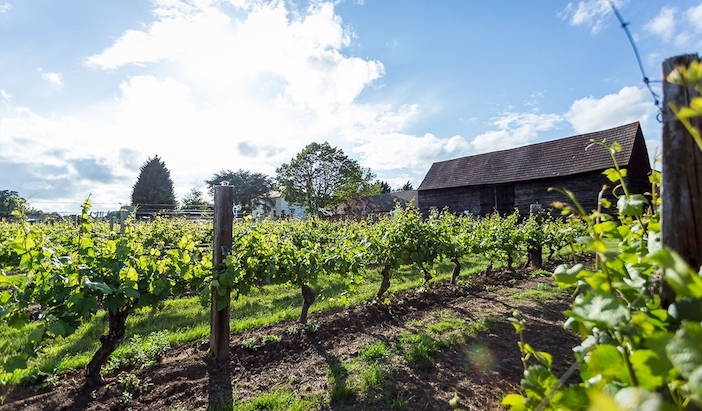
New Hall vineyard, one of the oldest in the country
It is the vineyards which may save the green spaces and pretty villages of Essex from being over developed. Around Saffron Walden there is the Saffron Grange Vineyards, where you can arrange for a tour. Around Downham Hall, there are the vineyards at Crouch Ridge and Clay Hill Vineyard; closer to Chelmsford is Galleywood Vineyard, where there’s tours, tastings and food. There’s Bardfield Vineyard near Braintree and I discovered later Finchingfield has its own vineyard, as well. Wine, it seems, could well be the next thing to define the county, a world away from second-hand car dealers and page three models.
And what about those intellectuals? Thirty years ago, my article highlighted three of note. I would say there are considerably more than that now.
For more information, and to start planning your trip, please visit the official tourism website at www.visitessex.com.
Header photo: Roydon village green (courtesy of Visit Epping Forest)

